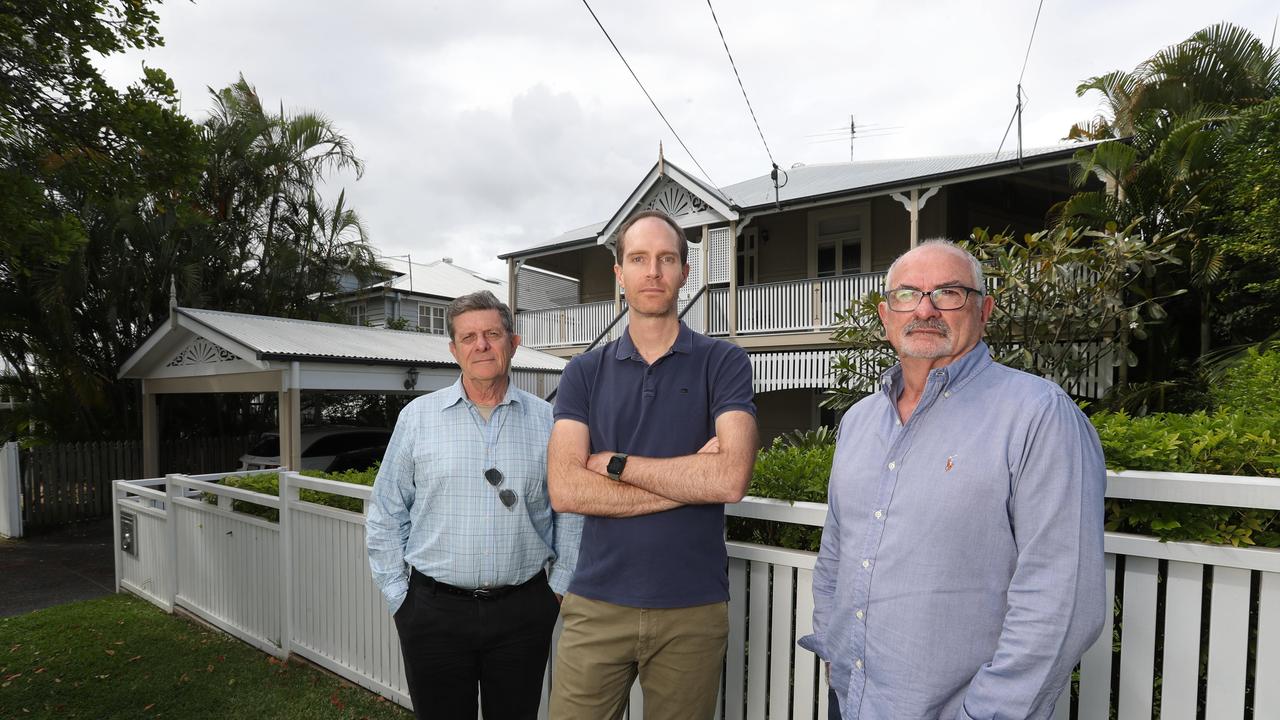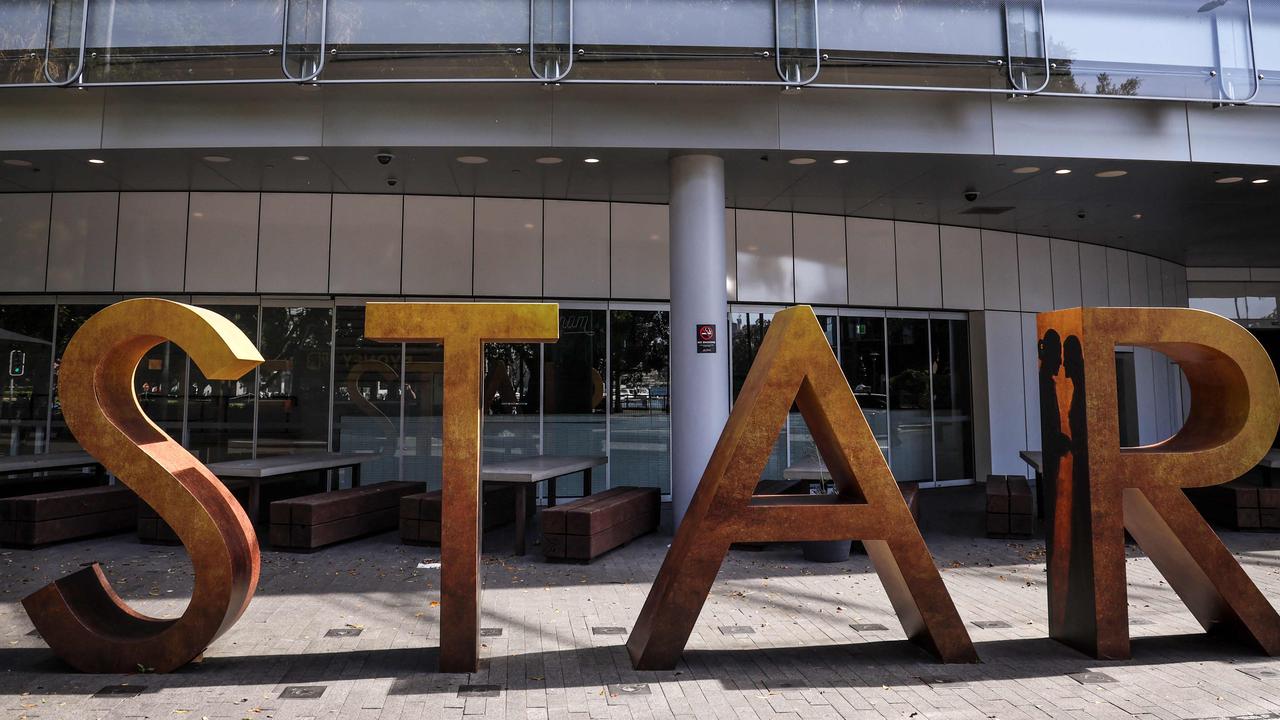Airport noise blamed as house prices tumble in blue-chip suburbs
Property prices in some of Brisbane’s most prestigious suburbs have nosedived due to a dramatic increase in aircraft noise, with pilots accused of taking shortcuts over blue-chip areas. See which suburbs have taken the biggest hit.

Business
Don't miss out on the headlines from Business. Followed categories will be added to My News.
Property prices in some of Brisbane’s most prestigious suburbs have nosedived up to 10 per cent due to a dramatic increase in aircraft noise, with pilots accused of taking shortcuts over blue-chip areas.
Residents are enduring up to 150 extra flights a day over their properties after Brisbane Airport’s $1bn second runway opened in July last year.
While the property market is booming across the rest of the state, in the year to December 2020 house prices plunged a staggering 10.7 per cent in Bulimba and 3 per cent in Hawthorne, with real estate experts concerned it could just be the tip of the iceberg.
Ascot and Teneriffe managed only very modest rises, well below the Brisbane average of a 5.8 per cent hike.
Federal Liberal MP Trevor Evans, whose electorate of Brisbane takes in some of the affected suburbs, said the behaviour of some pilots allegedly doing “rat runs” through some areas added to the concerns.
“A lot of those flights were not going the full way around, instead they were shortcutting over suburbs and residents were pointing out that flights at that time were not expected,” he said, adding those issues had been addressed.
But the President of the Australian Federation of Air Pilots Captain Louise Pole said pilots simply followed set procedures under the direction of air traffic control.
“The issue is more complex than it seems. It involves the use of parallel runway operations under certain wind and weather conditions and the air traffic within the terminal airspace,” Capt Pole said.

“Pilots are simply flying set procedures - covering a number of predetermined approaches (standard arrivals or STARS) - under the direction of air traffic controllers employed by Air Services Australia.”
Property buyer’s agent Matt Reeves predicted the impact of the new runway and associated flights paths on Brisbane’s “poshest” suburbs in 2019, and said the full horror was still to be fully realised.
“It’s a big concern. It’s something I would flag to all my clients,” said Mr Reeves.
“There are a lot of anecdotal reports the noise is worse than that predicted by the Brisbane Airport mapping data.”
CHECK OUT THE TABLE TO SEE WHERE AIRCRAFT NOISE HAS BECOME WORSE, STAYED THE SAME, OR GOTTEN BETTER AND THE ANNUAL CHANGE TO HOUSE PRICES.
Chairman of the Brisbane Flight Path Community Alliance David Diamond said a survey of 2000 residents across the worst-affected suburbs showed 70 per cent would consider moving to escape the din.
Almost all of those surveyed (95 per cent) said the noise was worse than they had expected, and Mr Diamond said they believed they had been misled by Brisbane Airport Corporation and Airservices Australia.
“If you live in New Farm, you were told you’d probably get two flights a day at 70 decibels. They’re absolutely getting creamed on that,” he said.
“In Hawthorne, we were going to have minimal disruption yet we can get up to 150 flights a day, and typically 120 to 130 and there’s not an international airport open yet.”
In response to the flood of complaints since the new runway opened, the Aircraft Noise Ombudsman has launched an investigation, and Airservices Australia has brought forward its post-implementation review of the flight path changes.

A spokeswoman from the Brisbane Airport Corporation (BAC) said the reduction in air traffic meant a greater spread of smaller planes (turbo props) than first communicated to the community.
BAC have since worked with Airservices Australia on the issue and in November last year implemented a procedure to reduce noise.
“They implemented a temporary Noise Abatement Procedure in November 2020 to realign turbo prop arrival aircraft to the area between the short and long approaches to rectify this issue,” she said.
“This temporary procedure will be in place until operations increase, which will result in the same outcome – less spread and aircraft falling within the below swathes (area).”
Mr Evans said it was a “genuine, legitimate issue” for residents and every effort was being made to find a solution.
One of those included an increase in the allowable tailwind for departing and arriving aircraft from 5 knots to 10 knots.
Mr Evans said the allowance was reduced by the Civil Aviation Safety Authority when the new runway was approved, which meant a lot fewer aircraft could depart or approach the airport over Moreton Bay.
“Our hope is if we can get that rule relaxed than a greater proportion of aircraft movements in and out of Brisbane Airport will be able to travel in over the bay as opposed to over land,” said Mr Evans.
Brisbane Airport Corporation chief executive Gert-Jan de Graaff said since the new runway opened, 53 per cent of daytime flights were over the bay and 72 per cent of evening flights.
He recognised there were “pockets of the community” who were unhappy about the new flight paths but said most people recognised the importance of building the new runway.
“Brisbane people recognise that a growing airport means there are some noise impacts, but the trade-off is that there will be better connections to all the places they need and want to go and jobs for their kids and grandkids,” Mr de Graaff said.
His words were of cold comfort to members of Mr Diamond’s group who called for a new environmental impact statement to be done, so the rules of engagement were clear.
“Our position is let’s get a solution before people have to move,” said Mr Diamond.
“We want to stay and we want to live in our suburbs and we want it to be controlled and managed so that’s our number one priority at the moment.”
But while some suburbs were suffering, others such as Camp Hill homeowners were actually benefiting following the redirection of flights away from their properties.
Selling agent Shane Hicks of Place Bulimba said there was “definitely less concern” about plane noise from potential buyers in Camp Hill since the flight path had changed and air traffic had decreased.
“It helps not to have the possibility of a low flying plane going past during an open home. But is it a driver (of price growth)? I think that’s a long bow to draw.”
Mr Hicks said Camp Hill – which recorded 9.4 per cent growth in the March quarter – had always been a popular suburb and was seeing a lot of renovations and new building activity.
Murrarie’s Zoe Earl said while she had lived in the area mor ethan eight years, and noise had always been an issue, it was tolerable.
“The surrounding area affected by the flight paths, you know Murrarie, Hawthorne, and Bulminba are all great suburbs on the rise and I really feel the quality of life is affected by adding another flight path," she said.
“The flights have been sporadic over the last 12 months, they start early and can be overheard quite late at night as well”.
“Obviously flights have been reduced but it seems there is more domestic and international flights of late, and the increased traffic, with the additional flight path will be really stressful.”
Originally published as Airport noise blamed as house prices tumble in blue-chip suburbs








